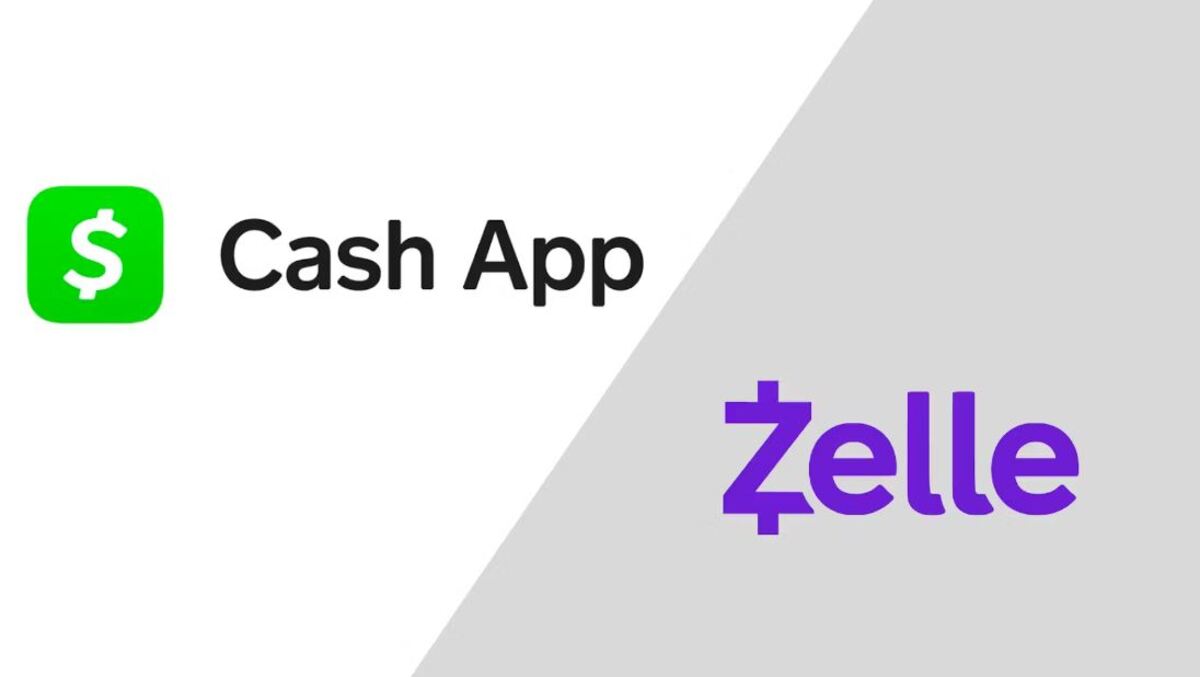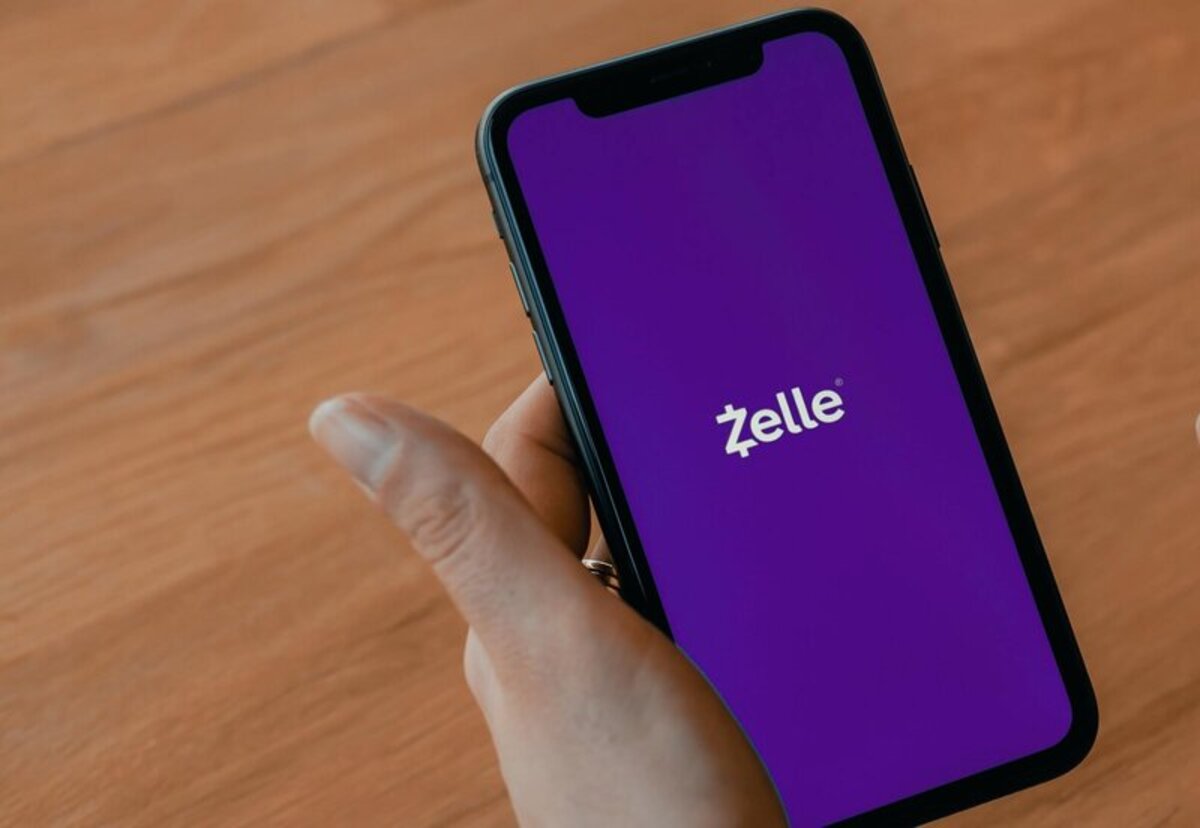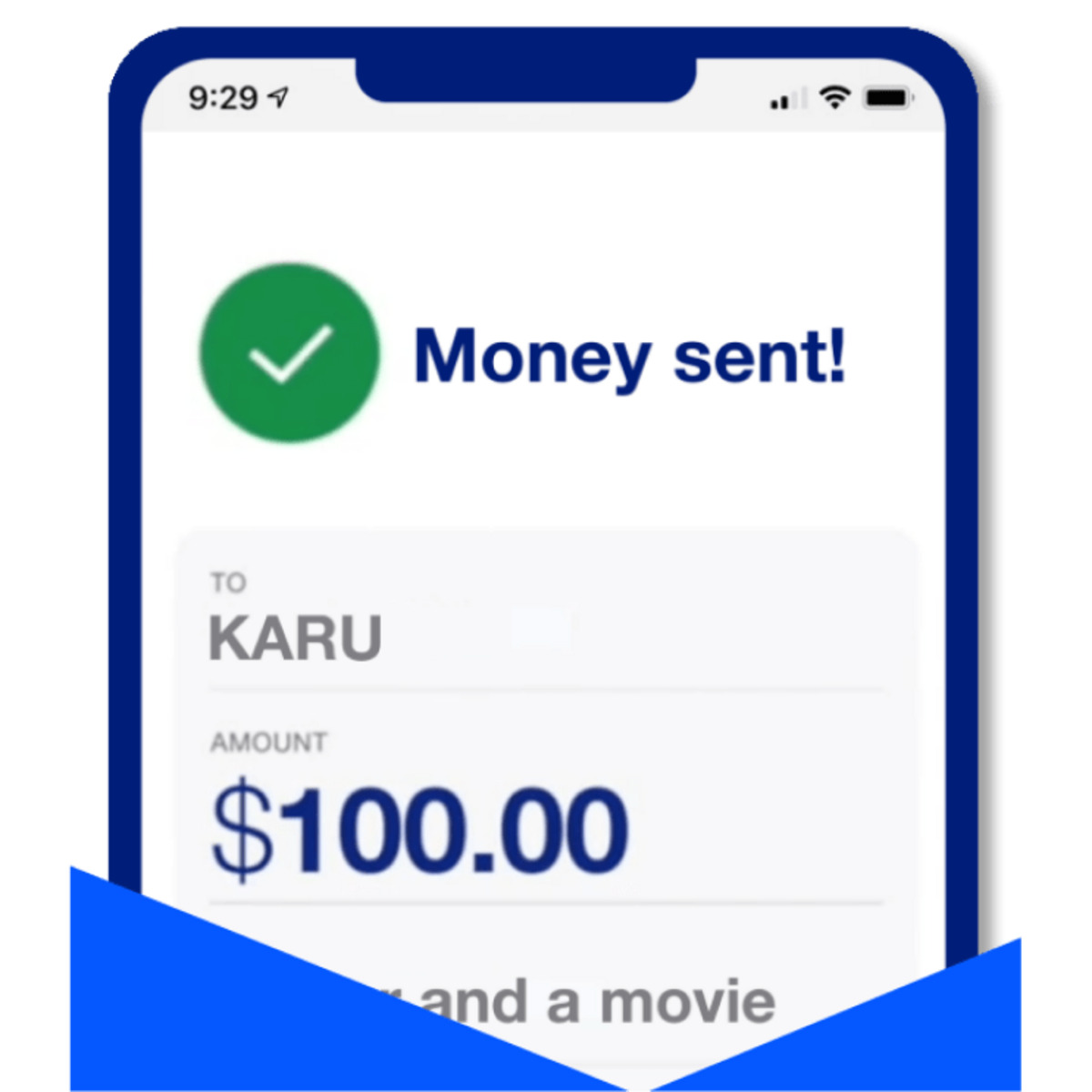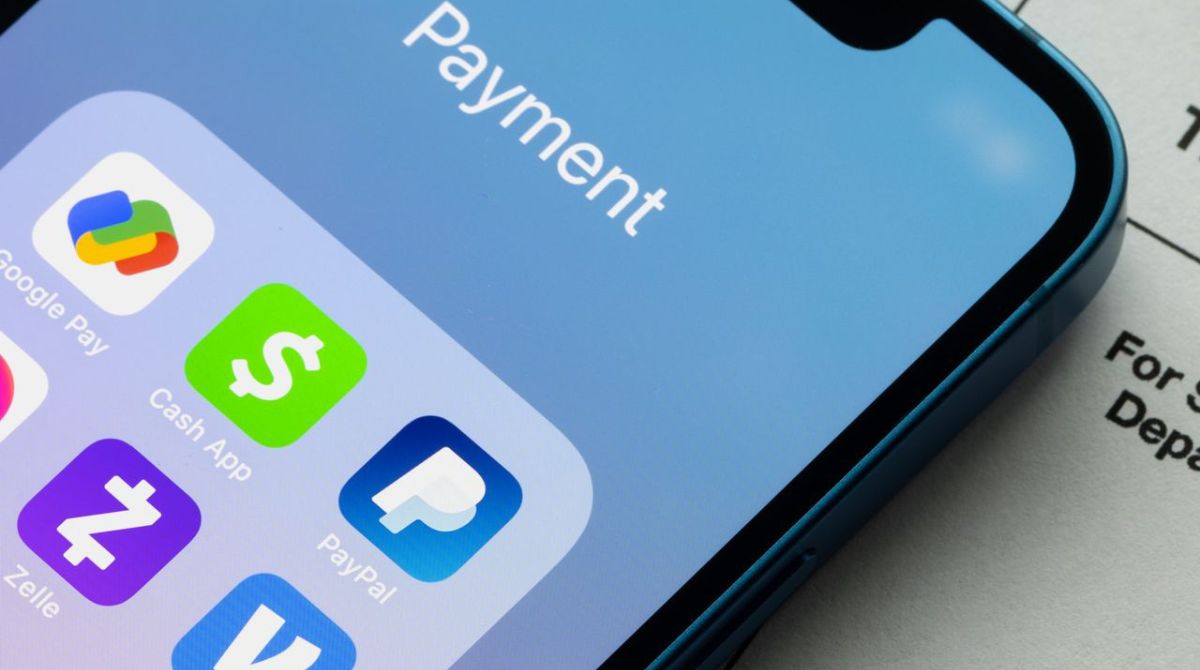Introduction
Welcome to the world of mobile payment apps, where convenience and efficiency have revolutionized the way we handle our financial transactions. With the rise of technology, apps like Zelle and Cash App have gained immense popularity, making it easier than ever to send and receive money from your smartphone. Whether you want to split a bill, pay a friend back, or shop online, these apps provide a convenient and secure alternative to traditional payment methods.
But with so many options available, which one is better: Zelle or Cash App? In this article, we will compare the key features, security measures, fees, and other aspects of both apps to help you make an informed decision.
Before we dive into the specifics, it’s important to note that Zelle and Cash App have different focuses and target audiences. Zelle is a service primarily used by banks and credit unions to facilitate instant money transfers between account holders. On the other hand, Cash App, developed by Square Inc., offers a broader range of features, including peer-to-peer payments, investing, and even the ability to buy and sell Bitcoin. Understanding the core functionalities of each app will help you evaluate which one better suits your needs.
Now that we have a basic understanding, let’s take a closer look at Zelle and Cash App to determine their strengths, weaknesses, and which one comes out on top in various categories.
What is Zelle?
Zelle is a digital payment platform that allows users to send and receive money quickly and securely. Unlike other payment apps, Zelle is integrated into the online and mobile banking platforms of participating financial institutions, making it a convenient option for those who already have accounts with partnering banks. Currently, over 1,000 banks and credit unions offer Zelle as a feature to their customers.
One of the main advantages of Zelle is its speed. When both the sender and receiver are enrolled in Zelle, transactions are typically completed within minutes, providing instant access to funds. This makes it an ideal choice for situations where immediate payment is required, such as splitting a restaurant bill or reimbursing a friend.
To use Zelle, users simply need to have a bank account with a participating financial institution and the recipient’s email address or mobile phone number. Once the transaction is initiated, funds are directly transferred between the sender’s and the recipient’s bank accounts, eliminating the need for third-party intermediaries.
Another significant advantage of Zelle is its widespread availability. As mentioned earlier, numerous banks and credit unions across the United States offer Zelle to their customers, making it accessible to a large portion of the population. Additionally, many major banking institutions have their own branded version of Zelle, further increasing its reach and popularity.
Furthermore, Zelle is known for its straightforward user interface and simple registration process. Users can easily set up Zelle by linking their bank account to the app and verifying their identity through their financial institution. The platform is designed to be user-friendly, even for those who may be less tech-savvy.
While Zelle offers convenience and speed, it is worth noting that it lacks some of the additional features found in other payment apps. With Zelle, the primary focus is on money transfers between individuals, rather than a wide range of financial services. This streamlined approach may be appealing to those who prefer a simple and efficient payment solution.
What is Cash App?
Cash App is a popular peer-to-peer payment app developed by Square Inc. It allows users to send and receive money quickly and easily, making it a convenient solution for various financial transactions. With Cash App, users can link their bank accounts or debit cards and seamlessly transfer funds to other users.
One of the key features of Cash App is its versatility. In addition to sending and receiving money, users can also use the app to pay for goods and services at participating merchants or make online purchases. Cash App offers the option to create a personalized Cash Card, a virtual debit card that can be used for in-store and online transactions wherever Visa is accepted.
Cash App also provides users with the ability to invest in stocks and buy and sell Bitcoin. This allows individuals to access additional financial opportunities beyond simple money transfers. The app provides real-time market data and makes investing more accessible to a wider audience.
When it comes to the user experience, Cash App offers an intuitive interface that is easy to navigate. The registration process is straightforward, requiring users to provide basic personal and banking information. Once set up, users can quickly send money to contacts in their phone book or by entering their Cash App username or mobile phone number.
Another notable feature of Cash App is its Cash Boost program. This rewards program provides users with instant discounts or cashback offers when using their Cash Card at participating merchants. It’s a great way for users to save money while making everyday purchases.
Security is a top priority for Cash App, as it uses encryption and other security measures to protect user data and financial information. Additionally, Cash App offers optional security features such as fingerprint or PIN authentication for added protection.
It’s important to be aware of the fees associated with using Cash App. While the app itself is free to download and use, there are fees for certain transactions, such as instant transfers or withdrawing funds using an ATM. However, many everyday transactions, such as sending money to friends or family, are typically free.
Overall, Cash App offers a wide range of features and capabilities beyond simple money transfers. With its user-friendly interface, flexibility, and additional financial opportunities, it has gained popularity among a diverse user base.
How does Zelle work?
Zelle operates as a digital payment network within the online and mobile banking platforms of participating financial institutions. Here’s a step-by-step breakdown of how it works:
- Enrollment: To use Zelle, users need to have a bank account with a participating financial institution. Most major banks and credit unions offer Zelle as a feature to their customers. Users can enroll in Zelle by accessing their bank or credit union’s online or mobile banking platform and following the registration process.
- Sending Money: Once enrolled, users can initiate a transaction by selecting the option to send money through Zelle. They will need to provide the recipient’s email address or mobile phone number, which should be associated with the recipient’s bank account. It is important to ensure the accuracy of the recipient’s information to avoid any issues with the transaction.
- Verification: Before completing the transaction, Zelle may prompt the sender to verify the recipient’s information. This step is crucial to ensure that the money is being sent to the correct recipient. The sender may also have the option to add a memo or note to accompany the payment.
- Confirmation: Once the transaction is initiated, Zelle will process the payment and send a notification to both the sender and the recipient. Typically, the notification will include the amount of money sent, as well as the sender’s name and any accompanying memo. The funds will be debited from the sender’s bank account and credited to the recipient’s bank account.
- Receiving Money: If the recipient is already enrolled in Zelle, they will receive a notification about the incoming payment. The recipient can then go to their online or mobile banking platform and accept the funds, which will be directly deposited into their bank account. If the recipient is not enrolled in Zelle, they will receive instructions on how to sign up and claim the funds.
It’s important to note that Zelle transactions are typically completed within minutes when both the sender and the recipient are enrolled in Zelle and have accounts with participating financial institutions. However, in some cases, it may take longer depending on the recipient’s bank and any additional verification processes.
Overall, Zelle provides a fast and convenient way to send and receive money between individuals within the participating financial institutions’ banking platforms. Its integration with online and mobile banking makes it a seamless and efficient payment option for millions of users.
How does Cash App work?
Cash App operates as a peer-to-peer payment app that allows users to send and receive money quickly and easily. Here’s a breakdown of how it works:
- Registration: To use Cash App, users need to download the app from the App Store or Google Play Store and sign up for an account. During the registration process, users will be prompted to enter their basic personal information and link their bank account or debit card to the app.
- Sending Money: Once registered, users can initiate a transaction by selecting the option to “Send” money within the Cash App. They will need to enter the recipient’s Cash App username, mobile phone number, or email address. It’s important to ensure the accuracy of the recipient’s information to avoid any issues with the transaction.
- Verification: Before completing the transaction, Cash App may prompt the sender to verify their identity through additional security measures such as fingerprint or PIN authentication. This step helps ensure the security of the transaction and protect the user’s account.
- Confirmation: Once the transaction is initiated, Cash App will process the payment and send a notification to both the sender and the recipient. The notification will include the amount of money sent, as well as the sender’s name. The sender can also add a note or memo to accompany the payment if desired.
- Receiving Money: If the recipient already has a Cash App account, they will receive a notification about the incoming payment. The funds will be directly deposited into their Cash App account balance. The recipient can then choose to either keep the funds in their Cash App balance or transfer them to their linked bank account. If the recipient does not have a Cash App account, they will receive instructions on how to sign up and claim the funds.
In addition to sending and receiving money, Cash App offers various other features and services. Users can make purchases at participating merchants or online using their Cash Card, a virtual debit card provided by Cash App. The Cash Card is linked to the user’s Cash App account balance and can be used wherever Visa is accepted.
Cash App also provides users with the option to invest in stocks and buy and sell Bitcoin. The app offers real-time market data and makes investing more accessible to a wider audience.
It’s important to note that Cash App may charge various fees for certain transactions, such as instant transfers or withdrawing funds from an ATM. Users should review the fee schedule provided by Cash App to understand any associated costs.
Overall, Cash App provides a user-friendly and versatile platform for easy money transfers, as well as additional financial services, making it a popular choice for many users.
Security of Zelle vs Security of Cash App
When it comes to handling financial transactions, security is of utmost importance. Both Zelle and Cash App have implemented security measures to protect user data and ensure the safety of their platforms. Let’s take a closer look at the security features of each app:
Zelle:
Zelle employs several security measures to safeguard user information:
- Bank-Level Encryption: Zelle utilizes industry-standard encryption protocols to protect user data during transmission. This ensures that personal and financial information is securely transmitted over the internet.
- Authentication: Zelle verifies user identities through the user’s financial institution. Users need to have a bank account with a participating financial institution, which adds an additional layer of authentication.
- Fraud Protection: In the event of unauthorized transactions or suspicious activities, Zelle provides fraud protection to users. Users can report any suspicious transactions to their bank or credit union, who will investigate the matter.
Cash App:
Cash App also prioritizes the security of its users’ information:
- Encryption: Cash App employs encryption technology to protect user data and ensure secure communication between users’ devices and the Cash App servers.
- Account Security: Cash App allows users to enable security features such as fingerprint or PIN authentication to protect access to their accounts.
- Fraud Protection: Cash App has a dedicated team that monitors for suspicious activities and unauthorized transactions. In case of any fraudulent activity, users can contact Cash App support for assistance.
- Debit Card Protection: Cash App’s Cash Card, used for in-store and online transactions, is protected by industry-standard security measures to prevent unauthorized use.
Both Zelle and Cash App strive to provide secure platforms for their users, but it’s important to note that no system is entirely foolproof. Users should take precautions to protect their personal information, such as using strong passwords, keeping their devices updated, and being cautious of phishing attempts.
In terms of the security comparison between Zelle and Cash App, Zelle’s integration with banks and credit unions may provide users with an additional layer of security. As Zelle operates within the existing banking infrastructure, it is subject to the security measures and protocols established by the financial institutions offering the service. On the other hand, Cash App offers greater flexibility and additional features, but the responsibility for security lies more with Square Inc., the developer of Cash App.
Ultimately, the level of security provided by both Zelle and Cash App is generally considered to be sufficient for most users’ needs. It is always recommended to review the security measures and policies of any payment app and take necessary precautions to protect your personal and financial information.
Ease of use of Zelle vs Ease of use of Cash App
When it comes to mobile payment apps, ease of use is a critical aspect to consider. Both Zelle and Cash App strive to provide a user-friendly experience, but there are some differences in terms of ease of use. Let’s explore the ease of use of Zelle and Cash App:
Zelle:
Zelle is designed to seamlessly integrate within the existing online and mobile banking platforms of participating financial institutions. Here are some key points related to Zelle’s ease of use:
- Accessibility: Zelle is accessible to users who have accounts with participating banks and credit unions. It comes pre-installed within the online or mobile banking app provided by these financial institutions, eliminating the need to download a separate app.
- Registration: To use Zelle, users typically need to enroll in the service through their bank or credit union’s online or mobile banking platform. Since Zelle is integrated within the existing banking system, the registration process can be straightforward and streamlined.
- Contacts and Transfers: Zelle often allows users to send money to contacts directly through their banking app, using their contacts’ email addresses or mobile phone numbers. This can make it easier to initiate transactions with people in their contacts list, without the need to manually enter account details.
Cash App:
Cash App is designed to offer a range of features and services beyond basic money transfers. Here are some points regarding Cash App’s ease of use:
- Setup and Registration: Cash App can be downloaded from the App Store or Google Play Store, and the registration process is typically quick and simple. Users will need to provide basic personal information and link their bank account or debit card to the app.
- Intuitive Interface: Cash App provides a user-friendly interface, making it easy to navigate and locate the necessary features and functions. The layout is designed to be intuitive, even for users who may not be familiar with mobile payment apps.
- Contact Options: Cash App allows users to send money to contacts by entering their Cash App username, mobile phone number, or email address. This flexibility allows users to initiate transactions using a method that’s most convenient for them and the recipient.
- Add-On Features: While Cash App offers more than just money transfers, the additional features and services, such as investing in stocks or buying and selling Bitcoin, may require a bit more familiarity and understanding for users who are new to these financial avenues.
When it comes to ease of use, Zelle may have an advantage for users who prefer the simplicity of using their existing banking platforms, without the need to download a separate app. On the other hand, Cash App provides a user-friendly interface and offers a wide range of features beyond basic money transfers, appealing to users who are comfortable exploring the various capabilities the app has to offer.
Ultimately, the ease of use of Zelle or Cash App will depend on individual preferences and familiarity with mobile payment apps. It’s recommended to try out both apps and consider which one aligns better with your needs and requirements.
Fees and Limits of Zelle vs Fees and Limits of Cash App
Understanding the fees and limits associated with mobile payment apps is crucial when comparing options like Zelle and Cash App. Let’s take a closer look at the fees and limits of both apps:
Zelle:
Zelle is generally known for its lack of fees for standard transactions. However, it’s important to note that some participating banks or credit unions may impose their own fees or limits. Here are some key points to consider:
- Transaction Fees: Zelle itself does not charge a fee for sending or receiving money through its platform. However, users should review their bank or credit union’s fee schedule, as they may implement their own fees for using Zelle.
- Limits: Zelle typically imposes transaction limits on the amount of money that can be sent or received within a certain time period. These limits may vary depending on the participating financial institution, so it’s important to check with your specific bank or credit union for their limits.
Cash App:
Cash App implements certain fees for certain transactions. Here are some important details regarding Cash App’s fees and limits:
- Transaction Fees: Cash App charges fees for specific transactions, such as instant transfers or withdrawing funds from an ATM. Instant transfers usually incur a fee of 1.5% of the transaction amount, while ATM withdrawals have a fee of $2.
- Card Transaction Fees: When using the Cash Card for transactions, there are typically no fees. However, Cash App may charge fees for using the Cash Card internationally or for certain types of transactions.
- Limits: Cash App imposes limits on the amounts that can be sent or received within a certain time period. These limits can vary depending on factors such as account verification and usage history. Cash App also sets limits on the amount that can be withdrawn from ATMs within a specific timeframe.
It’s crucial to review the fee schedules and terms of service for both Zelle and Cash App, as they may vary depending on the specific financial institution or user account. Understanding the applicable fees and limits will help users make informed decisions based on their financial needs and transaction requirements.
It is important to note that fees and limits are subject to change, and users should regularly check for any updates or changes from Zelle or Cash App to ensure they have the most accurate and up-to-date information.
Availability and Compatibility of Zelle vs Availability and Compatibility of Cash App
When considering a mobile payment app like Zelle or Cash App, it’s important to assess its availability and compatibility with various devices and platforms. Let’s compare the availability and compatibility of both apps:
Zelle:
Zelle is a service that is integrated within the online and mobile banking platforms of participating financial institutions. Here are some key points to consider regarding Zelle’s availability and compatibility:
- Bank Integration: Zelle is available to users who have bank accounts with participating financial institutions that offer Zelle as a feature. Currently, over 1,000 banks and credit unions across the United States offer Zelle, making it accessible to a large portion of the population.
- Platform Compatibility: Zelle is primarily accessible through the online banking or mobile banking platforms of participating financial institutions. It can be accessed via a computer, smartphone, or tablet, as long as the user’s bank or credit union provides the necessary integration.
- Recipient Availability: When sending money through Zelle, it’s important to ensure that the recipient has access to Zelle as well. The recipient needs to have a bank account with a participating financial institution that offers Zelle in order to receive funds.
Cash App:
Cash App is a standalone mobile payment app developed by Square Inc. Here are some considerations regarding Cash App’s availability and compatibility:
- App Availability: Cash App is available for download on both iOS and Android devices. Users can find the app on the App Store for iPhone users and the Google Play Store for Android users, making it accessible to a wide range of smartphone users.
- Compatibility: Cash App can be used on various devices, including smartphones and tablets, as long as the device meets the minimum system requirements for compatibility.
- Recipient Accessibility: When sending money through Cash App, the recipient does not necessarily need to have the app installed. Cash App allows users to send money to contacts using different methods, including the recipient’s Cash App username, mobile phone number, or email address.
In terms of availability, Zelle has a wider reach as it is integrated within the existing online and mobile banking platforms of participating financial institutions. Cash App, on the other hand, is available as a standalone app that can be downloaded and installed on compatible devices.
Both Zelle and Cash App have their own unique availability and compatibility factors, and users should assess which app aligns better with their specific banking relationships, preferred devices, and recipient accessibility.
Speed of Transactions on Zelle vs Speed of Transactions on Cash App
The speed at which transactions are processed is an important factor to consider when comparing mobile payment apps like Zelle and Cash App. Let’s explore the speed of transactions on each platform:
Zelle:
Zelle is designed to provide users with fast and almost instant money transfers between bank accounts. Here are some key points regarding the speed of transactions on Zelle:
- Instant Transfers: When both the sender and the recipient are enrolled in Zelle and have accounts with participating financial institutions, transactions are typically completed within minutes. This means that the recipient can have access to the funds almost immediately after the transaction is initiated.
- Near Real-Time Processing: Zelle uses the existing banking system to facilitate transactions, making it possible to transfer funds quickly and securely. The funds are directly transferred between the sender’s and the recipient’s bank accounts, eliminating the need for any additional intermediaries.
- Dependent on Financial Institution: The speed of transactions on Zelle may depend on the recipient’s bank or credit union and their specific processing times. Although Zelle strives for instant transfers, certain factors beyond Zelle’s control, such as the recipient’s bank system limitations, may cause slight delays.
Cash App:
While Cash App offers speed and convenience for money transfers, the processing time may vary depending on several factors. Here are some considerations regarding the speed of transactions on Cash App:
- Standard Transfers: Standard transfers on Cash App can take one to three business days to complete. This means that it may take a little longer for the recipient to have access to the funds compared to the near-instant transfers available on Zelle.
- Instant Transfers: Cash App offers the option of instant transfers for a fee, which allows users to send money to another Cash App user and have the funds available immediately. However, it’s important to note that instant transfers typically incur a fee of 1.5% of the transaction amount.
- Other Factors: The speed of transactions on Cash App may also be influenced by various factors such as network connectivity, account verification status, and the overall volume of transactions being processed at any given time.
Overall, Zelle is known for its near-instant transfers when both the sender and the recipient are enrolled in Zelle and have accounts with participating financial institutions. Cash App, on the other hand, offers standard transfers that may take a few business days to complete, with the option of instant transfers for a fee.
When it comes to the speed of transactions, Zelle provides a faster and more immediate transfer experience, particularly for those who need instant access to the funds. Cash App, while offering standard transfers, may require additional time for the transaction to be completed, unless users choose the instant transfer option.
Advantages and Disadvantages of Zelle
Zelle offers a range of advantages and disadvantages that users should consider when evaluating whether it is the right mobile payment app for their needs. Let’s explore the advantages and disadvantages of Zelle:
Advantages:
- Instant Transfers: One of the main advantages of Zelle is its ability to provide near-instant transfers when both the sender and the recipient are enrolled in Zelle and have accounts with participating financial institutions. This makes it ideal for situations where immediate payment is required.
- Widespread Availability: Zelle is available to users who have accounts with over 1,000 participating banks and credit unions. This widespread availability allows for a large number of individuals to utilize the service without the need to download a separate app.
- Integrated with Existing Banking Platforms: Zelle is integrated within the online and mobile banking platforms of participating financial institutions, allowing users to access the service seamlessly through their existing banking apps. This integration provides a familiar and convenient experience for users.
- Simplified User Experience: Zelle aims to provide a straightforward and user-friendly experience. Setting up Zelle is often a simple process, and sending money to contacts can be done easily by entering their email address or mobile phone number.
Disadvantages:
- Dependent on Participating Banks: The availability and features of Zelle may vary depending on the individual participating banks or credit unions. Some financial institutions may have different limits, fees, or user experiences. Users should consult their specific bank or credit union for complete details.
- Lack of Additional Features: While Zelle excels in instant money transfers, it has a more streamlined focus on peer-to-peer payments. Compared to other payment apps, Zelle may lack additional features such as investing or buying and selling cryptocurrency.
- Transaction Limits: Zelle often imposes transaction limits on the amount of money that can be sent or received within a certain time period. Users should be aware of these limits and ensure they do not exceed them for their specific needs.
It’s important for users to weigh these advantages and disadvantages of Zelle against their personal preferences and requirements to determine if it aligns well with their financial needs. For those who prioritize instant transfers and have accounts with participating banks or credit unions, Zelle can be a convenient and efficient mobile payment app. However, users seeking a broader range of features or who do not have access to participating financial institutions may need to explore alternative options.
Advantages and Disadvantages of Cash App
Cash App offers a range of advantages and disadvantages that users should consider when evaluating whether it is the right mobile payment app for their needs. Let’s explore the advantages and disadvantages of Cash App:
Advantages:
- Versatility: One of the key advantages of Cash App is its versatility. Beyond basic money transfers, Cash App offers additional features such as the ability to pay for goods and services at participating merchants, investing in stocks, and buying and selling Bitcoin. This breadth of features provides users with a more comprehensive financial platform.
- User-Friendly Interface: Cash App provides a user-friendly interface that is easy to navigate, making it accessible to a wide range of users. The layout and design are intuitive, even for those who may be less familiar with mobile payment apps.
- Cash Card: Cash App users have the option to request a Cash Card, a virtual debit card that can be used for in-store and online transactions where Visa is accepted. The Cash Card is linked to the user’s Cash App balance, providing more flexibility for spending the funds in their account.
- Rewards Program: Cash App offers a rewards program called Cash Boost, where users can access instant discounts or cashback offers when making purchases at participating merchants. This program allows users to save money while making everyday transactions.
Disadvantages:
- Transaction Fees: While Cash App offers many free services, there are fees associated with certain transactions. For example, instant transfers or withdrawing funds from an ATM may incur fees. Users should review the fee schedule provided by Cash App to understand the costs associated with specific transactions.
- Complexity for Some Users: With its extensive features, Cash App may appear more complex for users who are new to mobile payment apps. Features such as investing in stocks or buying and selling Bitcoin may require a learning curve and a deeper understanding of financial markets and cryptocurrencies.
- Dependent on Third-Party Merchants: Cash App’s additional features, such as payments at participating merchants, are dependent on the availability and acceptance of Cash App by those merchants. If a specific merchant does not accept Cash App, users may need to rely on alternative payment methods.
It’s important for users to assess these advantages and disadvantages of Cash App, weighing them against their specific needs and preferences. Cash App appeals to individuals seeking a versatile app that offers a wide range of services beyond basic money transfers. However, users should be mindful of the associated fees, consider their level of comfort with more advanced features, and ensure that Cash App is widely accepted by the merchants they frequent.
Conclusion
When considering the choice between Zelle and Cash App, it’s important to assess your specific needs, preferences, and banking relationships. Both Zelle and Cash App have their own strengths and weaknesses, and understanding these can help you make an informed decision.
If seamless integration with your existing banking platform is a priority, and you value instant transfers and widespread availability, Zelle may be the preferred option. Zelle’s core focus on peer-to-peer payments and its integration with numerous participating financial institutions make it a reliable and efficient choice for quick and secure money transfers.
On the other hand, if you are looking for a versatile payment app that offers additional features such as investing, a rewards program, and the ability to use a virtual debit card, then Cash App might be the better fit. Cash App’s user-friendly interface and its broader range of services appeal to users who desire a more comprehensive financial platform.
Ultimately, the choice between Zelle and Cash App comes down to your specific preferences, banking relationships, and the additional features you value. It may be beneficial to consider factors such as fees, transaction limits, security measures, speed of transfers, and compatibility with your preferred devices.
Before making a final decision, it’s advisable to further research both Zelle and Cash App, review the terms of service and fee schedules of each provider, and assess the availability and acceptance of the apps among your desired recipient base or participating merchants.
Regardless of which app you choose, it’s important to prioritize security by using strong and unique passwords, enabling additional authentication measures, and being cautious of potential phishing attempts or suspicious activities.
Ultimately, both Zelle and Cash App offer convenient and efficient solutions for everyday financial transactions. Understanding your unique needs and preferences will help determine which app is the ideal fit for you.

























